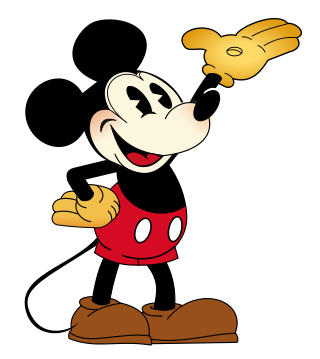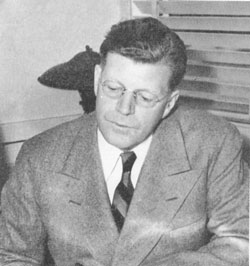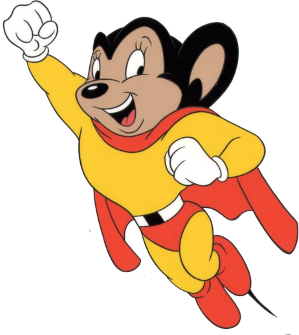Related Research Articles

Mickey Mouse is an American cartoon character co-created in 1928 by Walt Disney and Ub Iwerks. The longtime icon and mascot of the Walt Disney Company, Mickey is an anthropomorphic mouse who typically wears red shorts, large shoes, and white gloves.

The Academy Award for Best Animated Feature is given each year for the best animated film. An animated feature is defined by the academy as a film with a running time of more than 40 minutes in which characters' performances are created using a frame-by-frame technique, a significant number of the major characters are animated, and animation figures in no less than 75 percent of the running time. The Academy Award for Best Animated Feature was first awarded in 2002 for films released in 2001.
The Academy Award for Best Animated Short Film is an award given by the Academy of Motion Picture Arts and Sciences (AMPAS) as part of the annual Academy Awards, or Oscars, since the 5th Academy Awards, covering the year 1931–32, to the present.

Frederick Clinton Quimby was an American animation producer and journalist best known for producing the Tom and Jerry cartoon series, for which he won seven Academy Awards for Best Animated Short Films. He was the film sales executive in charge of the Metro-Goldwyn-Mayer cartoon studio, which included Tex Avery, Droopy, Butch Dog, Barney Bear, Michael Lah and multiple one-shot cartoons, as well as William Hanna and Joseph Barbera, the creators of Tom and Jerry.

Mighty Mouse is an American animated character created by the Terrytoons studio for 20th Century Fox. The character is a anthropomorphic superhero mouse, originally called Super Mouse, and made his debut in the 1942 short The Mouse of Tomorrow. The name was changed to Mighty Mouse in his eighth film, 1944's The Wreck of the Hesperus, and the character went on to star in 80 theatrical shorts, concluding in 1961 with Cat Alarm.

The golden age of American animation was a period in the history of U.S. animation that began with the popularization of sound synchronized cartoons in 1928 and gradually ended in the 1960s when theatrical animated shorts started to lose popularity to the newer medium of television. Animated media from after the golden age, especially on television, were produced on cheaper budgets and with more limited techniques between the 1960s and 1980s.

Terrytoons was an American animation studio in New Rochelle, New York, that produced animated cartoons for theatrical release from 1929 to 1973. Terrytoons was founded by Paul Terry, Frank Moser, and Joseph Coffman, and operated out of the "K" Building in downtown New Rochelle. The studio created many cartoon characters including Fanny Zilch, Mighty Mouse, Heckle and Jeckle, Gandy Goose, Sourpuss, Dinky Duck, Little Roquefort, the Terry Bears, Dimwit, and Luno; Terry's pre-existing character Farmer Al Falfa was also featured often in the series.

Knighty Knight Bugs is a 1958 Warner Bros. Looney Tunes cartoon directed by Friz Freleng, The short was released on August 23, 1958, and stars Bugs Bunny and Yosemite Sam.
Jim Reardon is an American animator, storyboard artist, screenwriter, and film and television director. He is best known for his work on the animated TV series The Simpsons. He has directed over 30 episodes of the series and was credited as a supervising director for seasons 9 through 15. He has been described by Ralph Bakshi as "one of the best cartoon writers in the business".

Mouse Trouble is a 1944 American one-reel animated cartoon short and is the 17th Tom and Jerry short produced by Fred Quimby. It was directed by William Hanna and Joseph Barbera, with music direction by Scott Bradley. The cartoon was animated by Ray Patterson, Irven Spence, Ken Muse and Pete Burness. Mouse Trouble won the 1944 Oscar for Best Animated Short Film, the second consecutive award bestowed upon the series. It was released in theatres on November 23, 1944 by Metro-Goldwyn Mayer and reissued on December 12, 1951.

The Metro-Goldwyn-Mayer cartoon studio was an American animation studio operated by Metro-Goldwyn-Mayer (MGM) during the Golden Age of American animation. Active from 1937 until 1957, the studio was responsible for producing animated shorts to accompany MGM feature films in Loew's Theaters, which included popular cartoon characters Tom, Jerry, Droopy, Butch, Spike, Tyke, and Barney Bear.

Aleksandar "Saša" Petrović was a Serbian film director. He was one of the major figures of the Yugoslav Black Wave. Two of his films were nominated for the Academy Award for Best Foreign Language Film: Three in 1966 and I Even Met Happy Gypsies in 1967. The latter was the first movie that presented the existence of Gypsies in society and everyday life; it was also the first full-feature film where Gypsies spoke their own language, Roma. Most roles were interpreted by real Gypsies; this was their movie. "As a child, I observed them and saw in these people faith and irrationality," said Petrović I Even Met Happy Gypsies won the FIPRESCI Prize and the Grand Prize of the Jury at the Cannes Film Festival; it also received a nomination for a Golden Globe. In 1967 Petrović was a member of the jury at the 17th Berlin International Film Festival.

Mickey and the Seal is a cartoon short created by Walt Disney in 1948. It was nominated for Academy Award for Best Animated Short Film, but lost to MGM's Tom and Jerry cartoon The Little Orphan, which shared one of seven Oscars for the Tom and Jerry series. It was the 122nd short in the Mickey Mouse film series to be released, and the second produced that year.
Michael Victor Sporn was an American animator who founded his New York City-based company, Michael Sporn Animation in 1980, and produced and directed numerous animated TV specials and short spots.
Warner Bros.' library of Oscar-nominated cartoons were showcased in a DVD set released by Warner Home Video on February 12, 2008 that included their own Looney Tunes and Merrie Melodies, as well as Tom and Jerry, Droopy, and other classic MGM cartoons, together with entries from Max Fleischer's Popeye and Superman series. All cartoons selected for this release were nominated for the Academy Award for Best Animated Short Film, with the exception of the film So Much for So Little, which won the Academy Award for Documentary Short Subject. A total of 41 cartoons were chosen for this set, 15 of them being Oscar winners.

Building a Building is a 1933 American animated short film produced by Walt Disney Production and released by United Artists. A remake of the 1928 Oswald the Lucky Rabbit film Sky Scrappers, the cartoon depicts Mickey Mouse working at a construction site under the supervision of Peg-Leg Pete while Minnie Mouse is selling box lunches to the workers. It was directed by David Hand, his first directorial assignment at Disney, and features the voices of Walt Disney as Mickey, Marcellite Garner as Minnie, and Pinto Colvig as Pete. It was the 51st Mickey Mouse short film, and the first of that year.
Bernard B. Brown was an American sound engineer and composer, who wrote the scores for many early animated cartoons produced by Leon Schlesinger Productions for distribution by Warner Bros. Pictures. He won an Academy Award in the category Sound Recording and was nominated for seven more in the same category. He was also nominated three times in the category Best Visual Effects. He worked on more than 520 films between 1930 and 1958.
Events in 1936 in animation.
References
- ↑ "1945 Oscars - Academy Awards - Winners and Nominees". Pop Culture Madness. Retrieved 2009-09-01.
- ↑ Lenburg, Jeff (1999). The Encyclopedia of Animated Cartoons. Checkmark Books. pp. 110–111. ISBN 0-8160-3831-7.
- ↑ Metacritic
- ↑ "Gypsy Life". Big Cartoon Database. Archived from the original on January 17, 2013. Retrieved 2009-09-01.
- ↑ 1946|Oscars.org
- ↑ Don Markstein's Toonopedia: Mighty Mouse